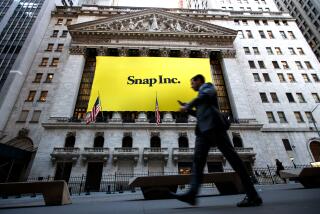YouTube videos to play on other sites
- Share via
san francisco -- Google Inc. will begin showing YouTube videos on thousands of other websites, hoping to profit from ads attached to the clips.
The expansion, scheduled to be announced today, represents the Internet search leader’s furthest-reaching attempt yet to cash in on its $1.76-billion acquisition of YouTube since the deal closed 11 months ago.
Google already shows some video ads on clips on YouTube’s own site.
The ads accompanying the outbound YouTube clips won’t be in a video format. Instead, they will appear as a graphic straddling the video or as a link along the bottom.
Mountain View, Calif.-based Google began showing ad-supported YouTube videos on a handful of websites this year. Now, it’s reaching out to its entire AdSense network -- an array of large and small Web publishers.
But Google won’t be pulling clips from YouTube’s entire library, which includes a multitude of wacky segments contributed by amateur videographers. The material sent to other websites will be confined to video from providers who sign consent forms.
If the broader distribution of video pays off, it could encourage Google to distribute other types of content, including news stories and audio files, across its vast network of advertising partners.
Until now, Google had been delivering only ads tied to the search requests and other content on the pages of its AdSense partners.
With the new twist, websites participating in AdSense now can sign up to specify the kinds of YouTube videos they want shown on their pages. A website focused on automobiles, for instance, might want to display YouTube videos about cars and other vehicles.
More than 100 video providers -- mostly professionals -- have agreed to allow Google to distribute their content. Initial participants include TV Guide Broadband, Expert Village, Mondo Media and Extreme Elements.
Google will share the ad revenue generated by the YouTube videos with the content provider and the website that shows the clips.
Google, which doesn’t break down its revenue-sharing arrangements, historically gives 60% to 80% of the money to its advertising partners.






